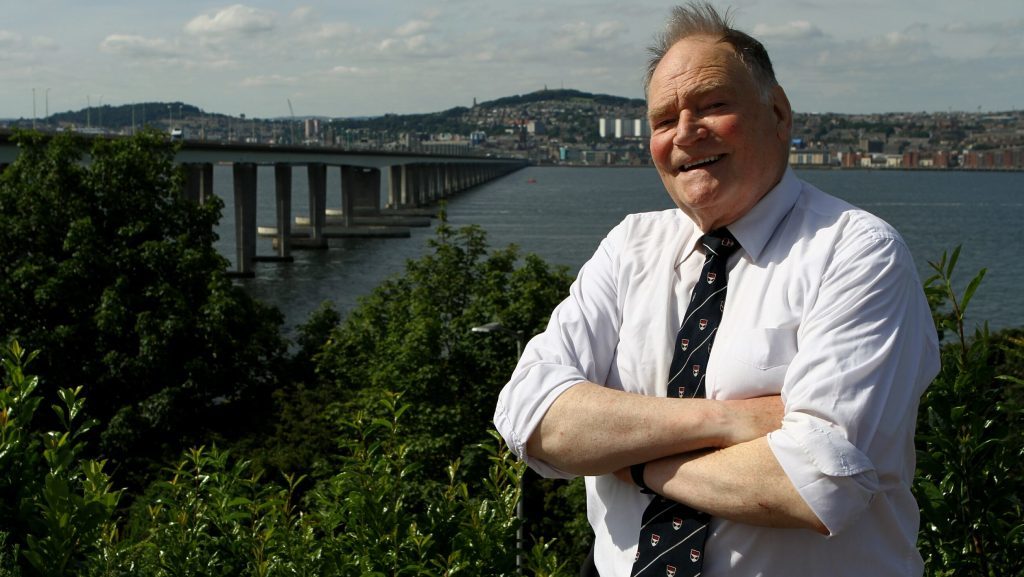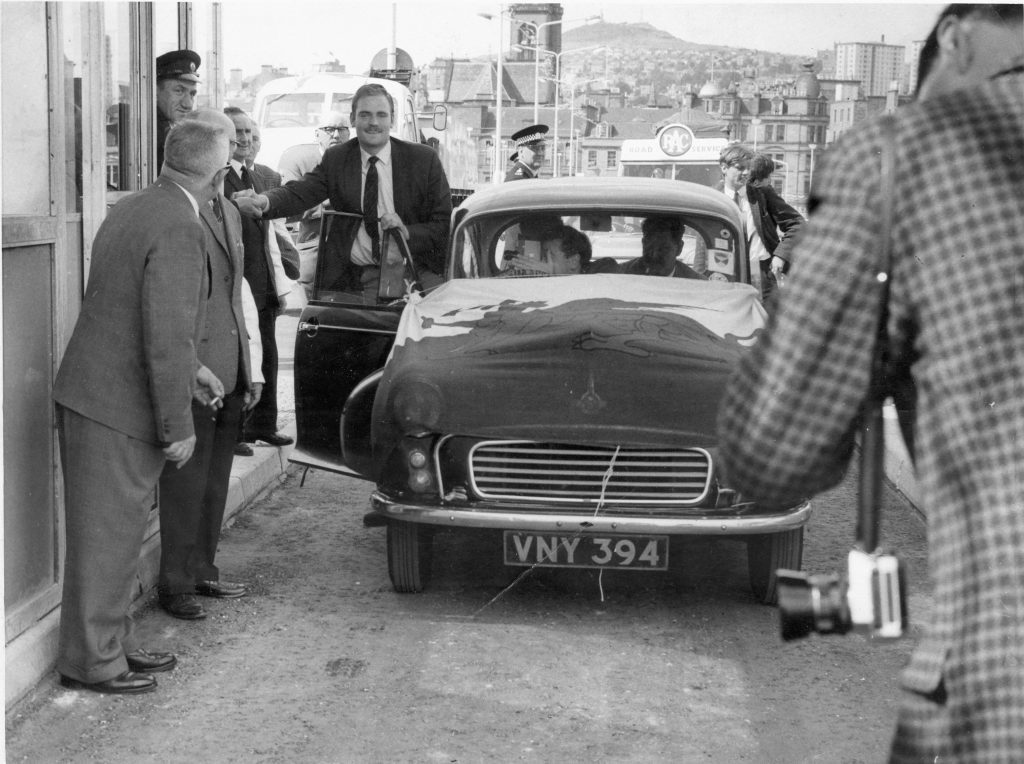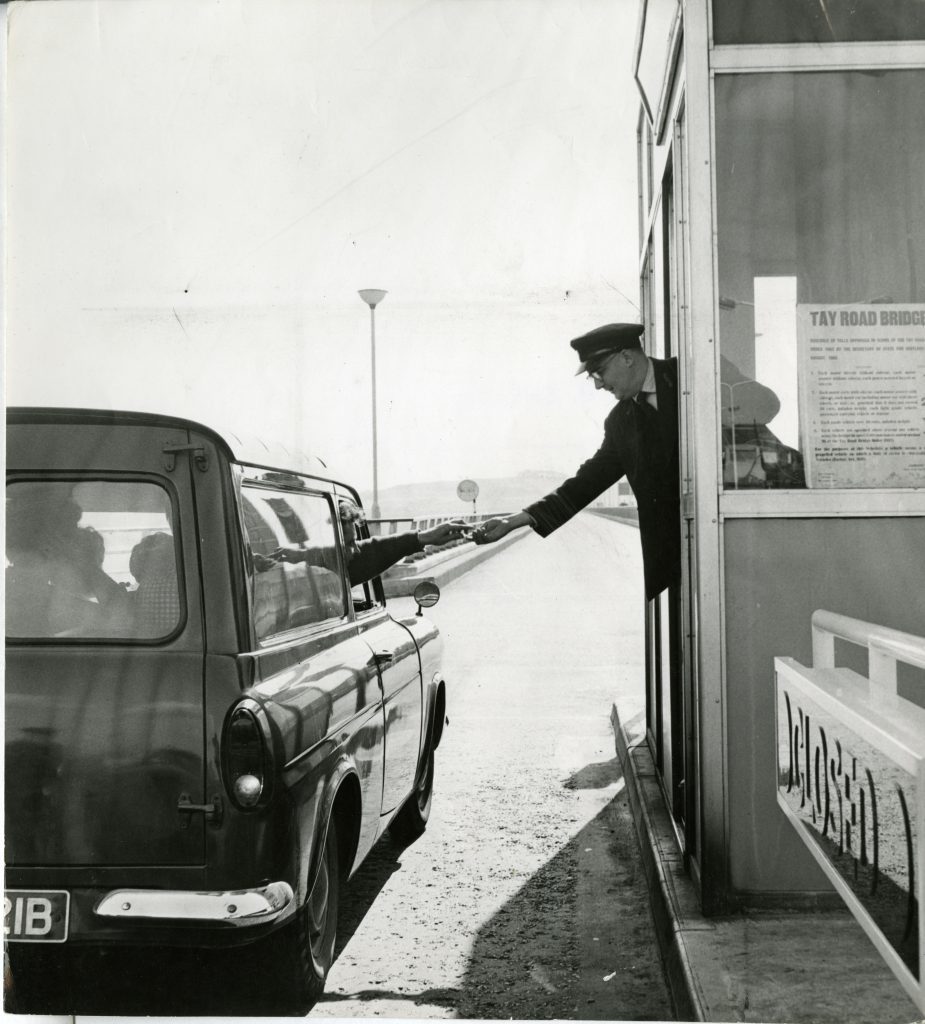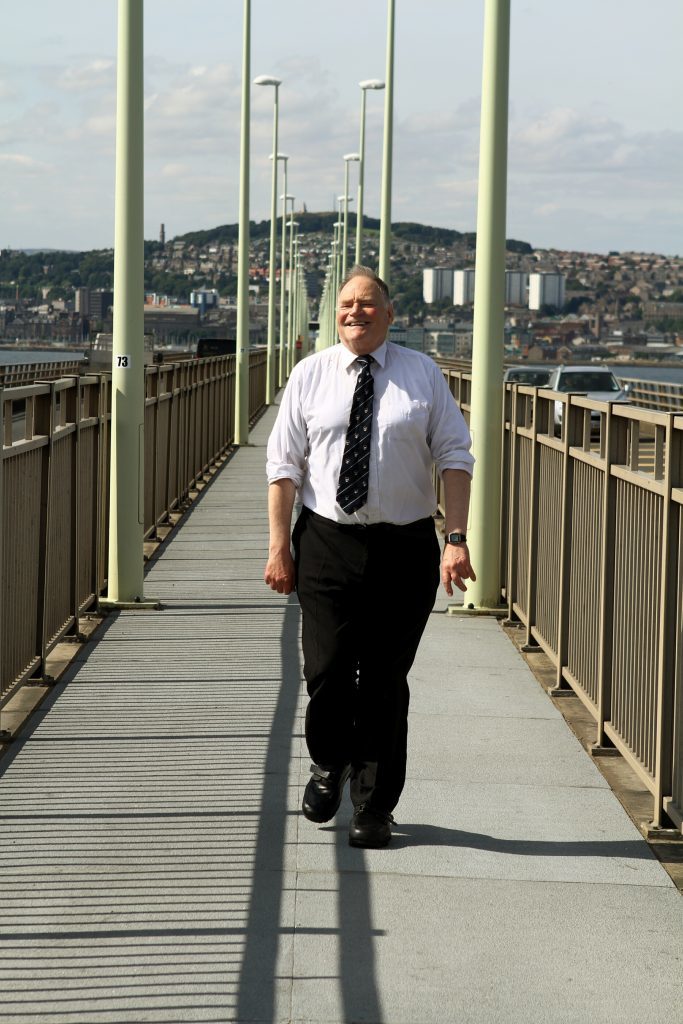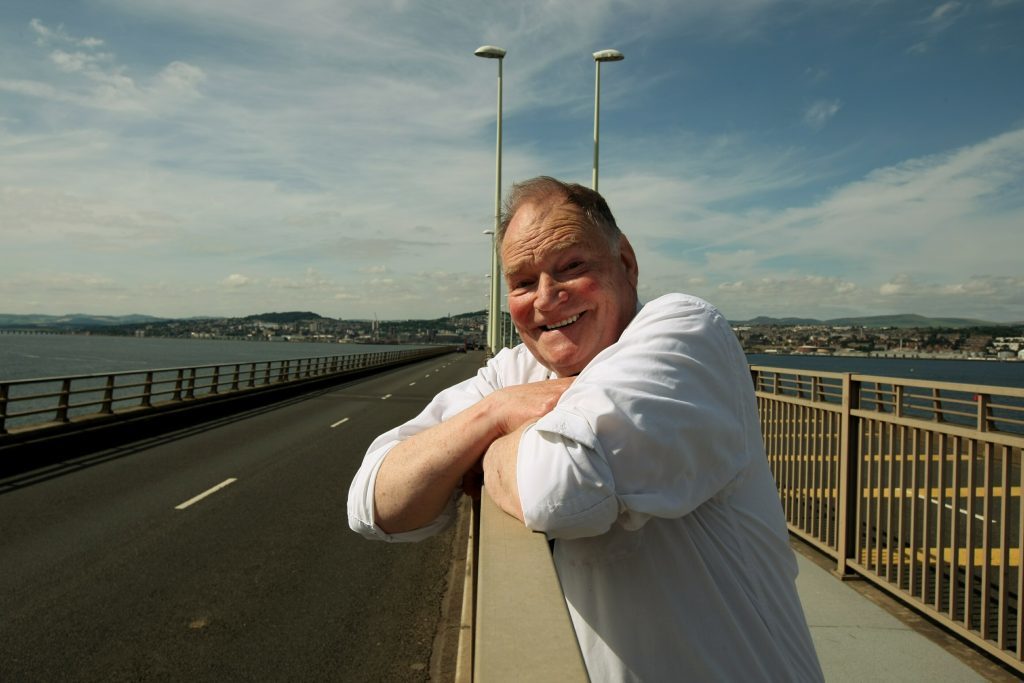Michael Alexander takes Hugh Pincott – the first private car driver to cross the Tay Road Bridge on August 18, 1966 – on a trip down memory lane by recreating the crossing that took place 50 years ago today.
Dundee will be “beyond compare” with any city in Europe when the £1 billion waterfront development is complete, according to a former student who made history by becoming the first member of the public to cross the Tay Road Bridge 50 years ago.
Hugh Pincott, now aged 74, of Plymouth, was a chemistry student at Queen’s College, Dundee, when he made the crossing from Dundee to Fife on the day of the bridge’s official opening on August 18 1966.
The retired BP chemist has made dozens of return visits over the year to the city he regards as his “spiritual home”.
But he’s particularly pleased to be back in Dundee this week to mark the Tay Road Bridge’s 50th anniversary.
And he was delighted to take up The Courier’s offer of a drive across the bridge to recreate that moment 50 years ago when he made history in his 1957 Morris Minor 1000.
“It was beyond my wildest dreams and expectations to be the first to cross the bridge and it’s a day that has lived with me forever,” smiles Hugh as we set off from the modern day Gellatly Street car park to reach the point on Dock Street where Hugh started his adventure all those years ago.
“I always believed that like Everest the bridge was there to be climbed – or more accurately crossed. “Certainly my view was that if I was there on the spot, as I was in 1966, it would be a crying shame to let someone else get there first!”
Hugh, who studied in Dundee from 1960 until 1967, had been editor of the student newspaper when he was recruited by the then Courier editor to be a lineage man and photographer, reporting mainly on college affairs.
It was during this period that he took it upon himself to be the first across – although he kept his mission quiet from friends in case he failed.
After careful preparation, he waited on Dock Street from 9am on the day before the opening, August 17.
Over the course of the day he invited Jim Henderson of the Scottish Daily Mail, Jim Roberts of The Courier and Ken Wilkie, then assistant manager at the CMC cement depot, to join him on the journey.
He was lucky as a coin toss decided it would be the Dock Street queue, with him at the front that would go ahead of a second queue on Riverside Drive.
Green light
He was given the green light to move at 1.30pm – exactly an hour after the Queen Mother made the official opening.
He was the first to pay his half Crown toll to cross with a Welsh dragon flag he borrowed from the Dundee Welsh Society draped over the car bonnet to honour his roots.
Noting that the bridge landfall road layout has changed dramatically since that day, Hugh smiles as we drive up to where the toll booths used to be and glide effortlessly across the bridge towards Fife.
“It took eight minutes to cross back then,” he laughs.
“Here on the left, I recall the old timber yards – McTavish and McAinsh I seem to remember. There was the jute importing docks. And down there was Caledon shipyards . In the very early days of course they were building whalers and trawlers. Now we see three oil rigs and wind power technology.
“But it was especially poignant looking ahead across the bridge. When I crossed it was completely clear. It was as if the region had been given a blank sheet to develop new opportunities.
“I remember seeing traffic coming the other way. Cars, lorries, wagons… It was a new beginning for commerce as much as anything.”
Hugh has enjoyed exploring Dundee this week with a bus pass – he doesn’t drive anymore. He’s full of questions about the former Law Tunnel which he visited decades ago and the changed skyline.
He’s been particularly impressed with V&A plans and thinks it is “wonderful” that the waterfront development will “re-connect” the city with the shore.
He’s also looking forward to catching up with old colleagues. Not only did he make history on the Tay Road Bridge 50 years ago this week. He also secured another first for the city when he received the first PhD from the newly formed Dundee University in 1968.
